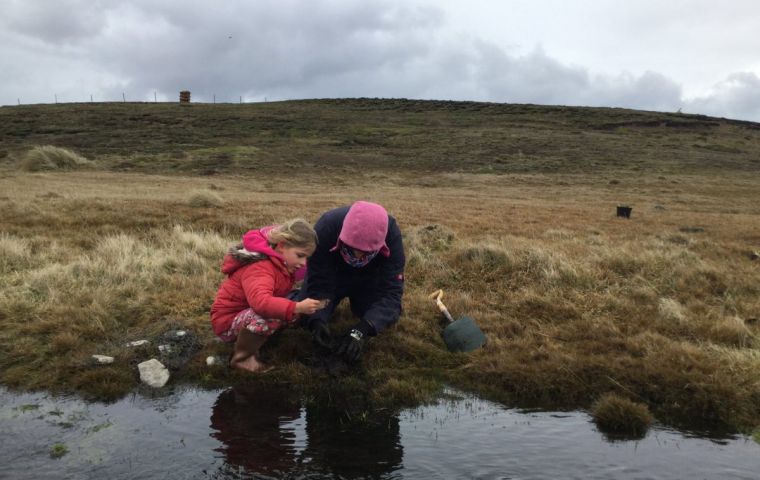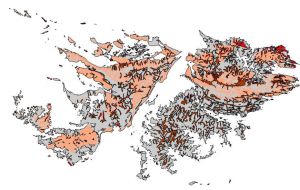MercoPress. South Atlantic News Agency
Falklands restored peatlands could become a piggy bank, University of Manchester paper
 With peatlands making up around 40% of the Islands, the Falklands are one of the most peat rich places in the world (Pic @FI_Conservation)
With peatlands making up around 40% of the Islands, the Falklands are one of the most peat rich places in the world (Pic @FI_Conservation)  UK Center for Ecology and Hydrology suggests that restoring the Falkland Islands peat lands could lead to up to £47 million worth of carbon offsets.
UK Center for Ecology and Hydrology suggests that restoring the Falkland Islands peat lands could lead to up to £47 million worth of carbon offsets. A new study by the UK Center for Ecology and Hydrology suggests that restoring the Falkland Island peatlands could lead to up to £47 million worth of carbon offsets. The findings came in a report co-authored by Jonathan Ritson, a Research Associate at the University of Manchester.
With a UK target to reach net-zero by 2050, peat land restoration offers the potential to help as peat lands are capable of absorbing and storing large amounts of carbon dioxide. With the right restoration efforts made, the world's peat lands have the potential to store 14 million tons of CO2e annually. They offer additional climate change benefits too, helping to prevent flooding, protect soils and improve biodiversity.
With peat lands making up around 40 percent of the Islands, the Falklands are one of the most peat rich places in the world. This puts them in a particularly unique position to benefit richly from restoration, with the study suggesting that restoring them could save up to 1 million tons of CO2e a year.
The restoration projects could prove valuable to the community both economically and ecologically. Restoring peat lands will mean the recovery of wildlife habitats, helping the Island's world-famous wildlife thrive, consequently supporting the tourism sector and conservation efforts. There are opportunities for new revenue streams for the local community too, such as selling offsets to business with net zero-emission goals.
Co-author Jonathan Ritson, from the School of Education, Environment and Development (SEED), said: “This report shows there's amazing potential for carbon sequestration in the Falkland Islands, however, we need further investment to trial peat land restoration methods and get the governance structure in place to ensure that everyone on the Islands can benefit.”
In order for any restoration projects to go ahead, the study's authors acknowledge that there would need to be alterations to land management and agricultural practices through close collaboration and support from farmers and landowners. But with the report suggesting the potential for the Falkland Islands to become a carbon negative society and the conservation of rare wildlife species, it's an investment worth considering.
Ref: Falkland Islands peat map. Red represents upland deep peat, brown valley peat, orange mixed upland organo-mineral and deep peat soils, and grey areas with little or no peat cover (thin organo-mineral soils, mineral soils and bare rock). http://uk-air.defra.gov.uk/reports/cat07/1904111135_UK_peatland_GHG_emissions.pdf




Top Comments
Disclaimer & comment rules-

-

-

Read all commentsMy 11 hectares of Lewis peat heather and finest gneiss granite may well be my salvation ! A bit of envy here Chicureo ...
Sep 15th, 2020 - 08:17 pm 0@“pc2020”, Jealous Much I THINK so!!!!!!
Sep 16th, 2020 - 08:23 am 012k downloads ....... just sayin' ;-)
Sep 17th, 2020 - 05:07 am 0https://falklandstimeline.files.wordpress.com/2020/03/falkland-wars-1700-1850-1.pdf
Commenting for this story is now closed.
If you have a Facebook account, become a fan and comment on our Facebook Page!